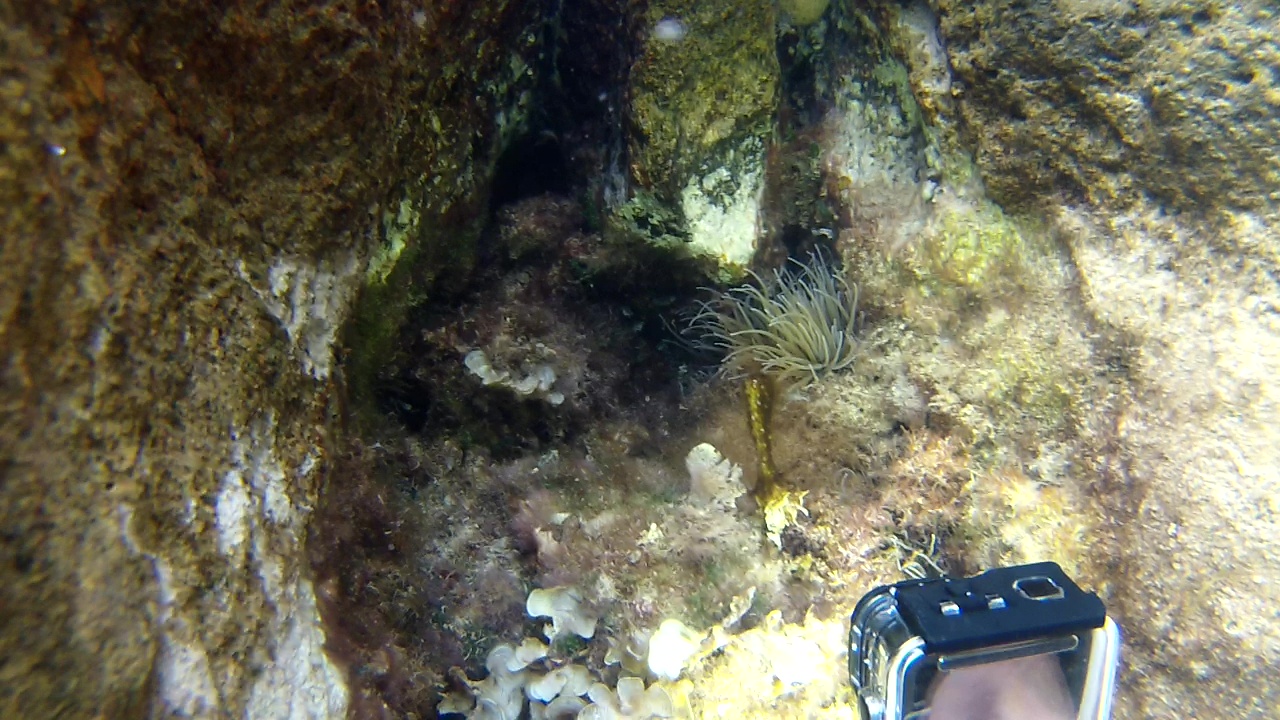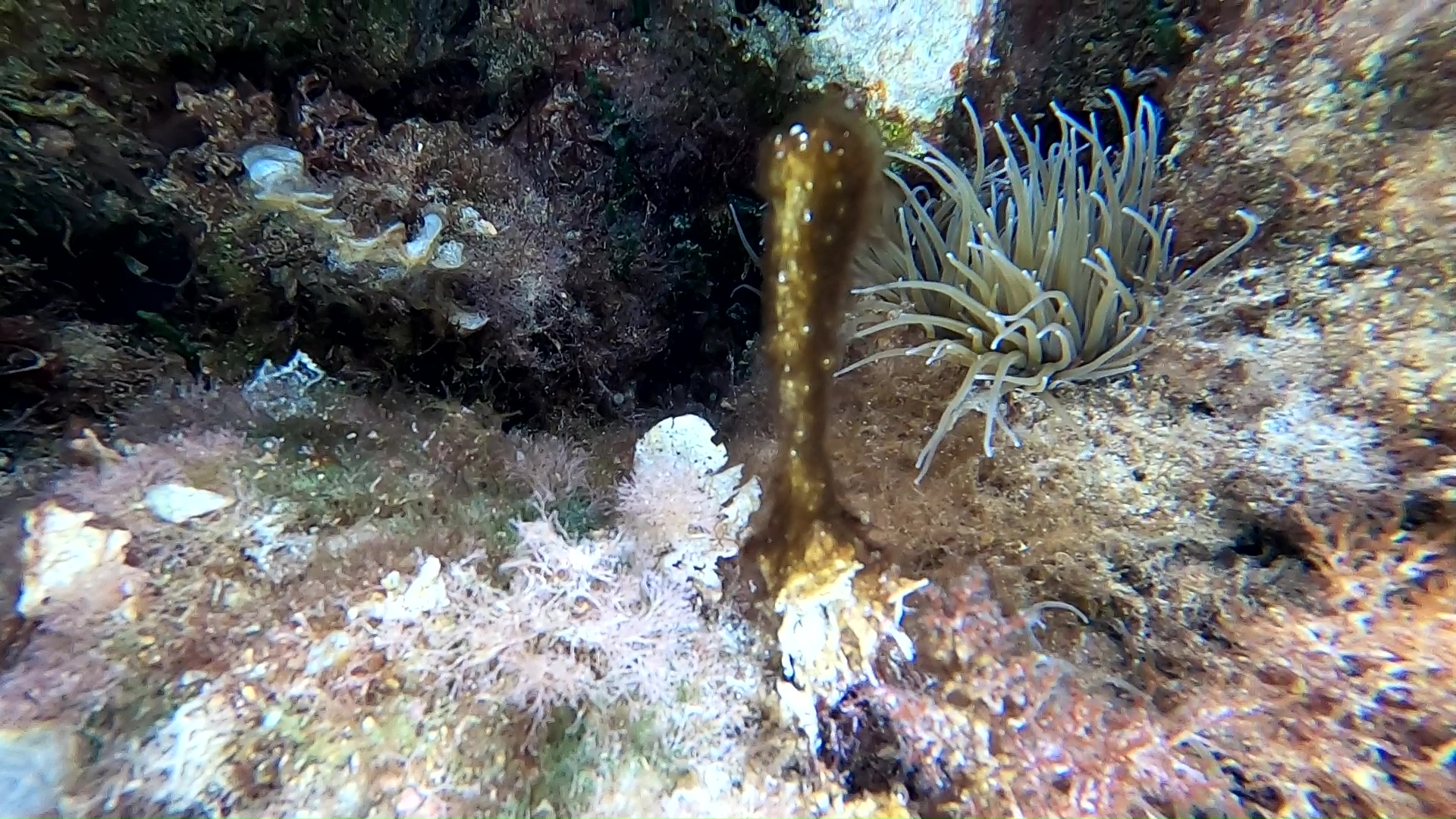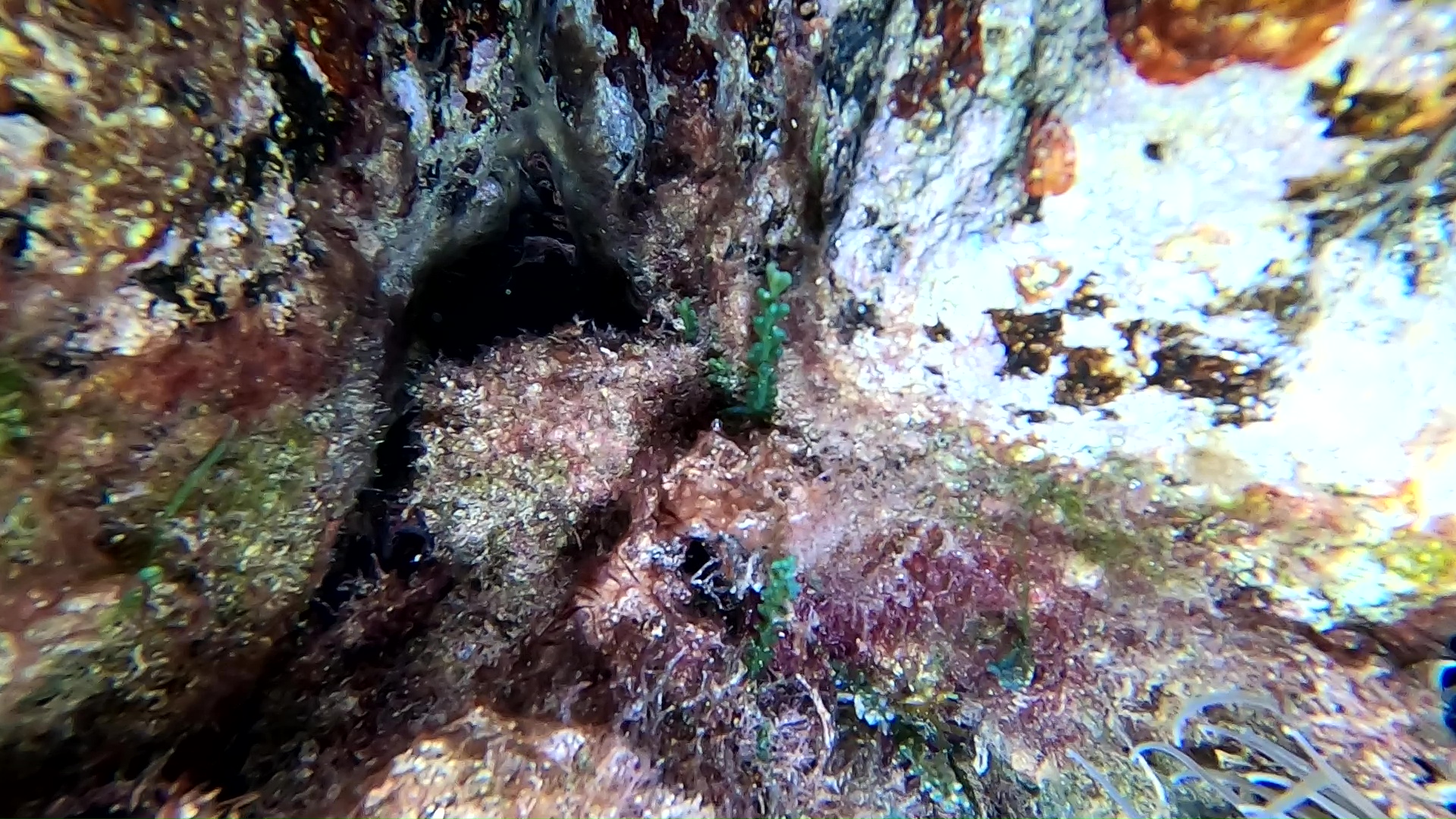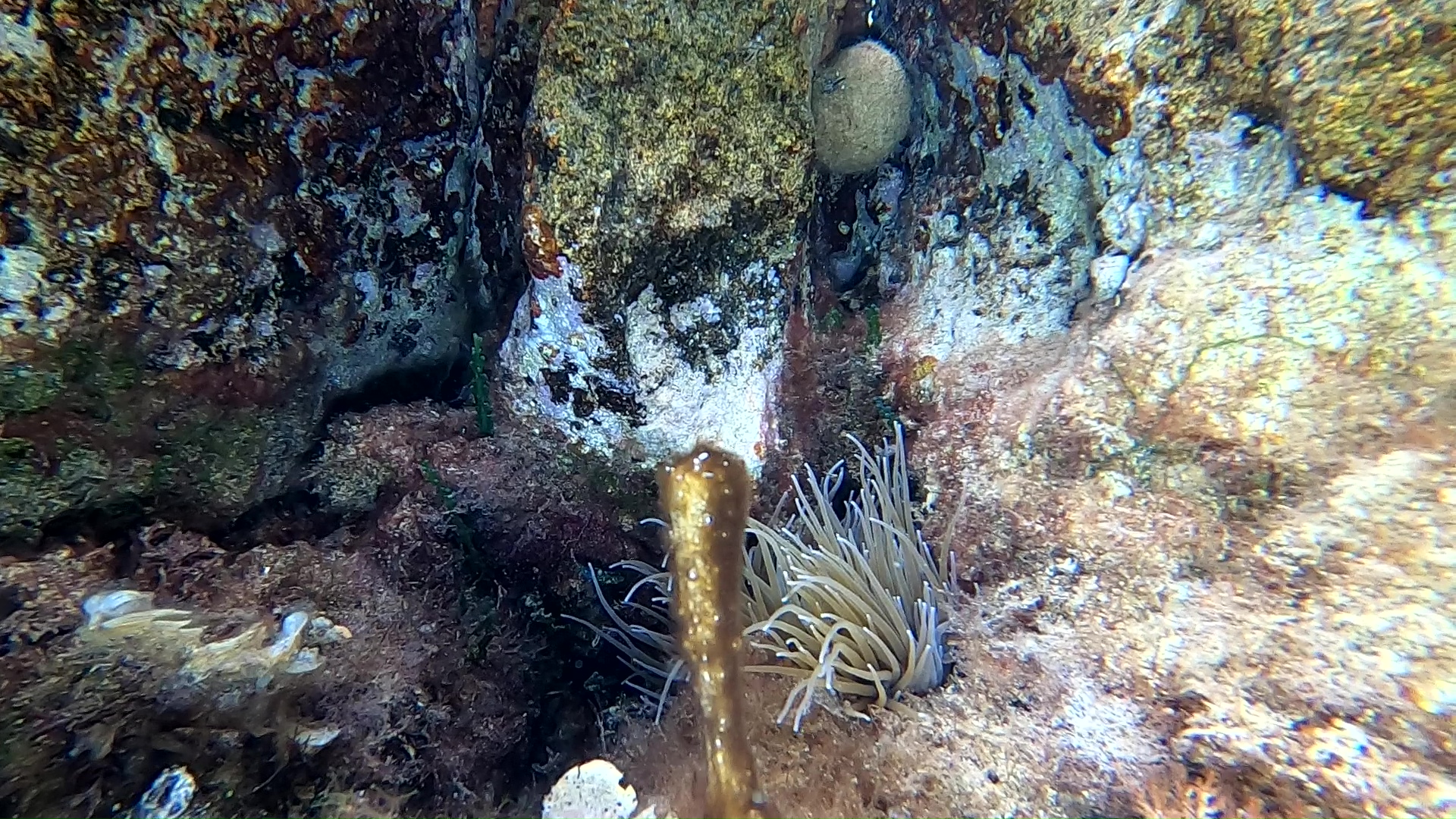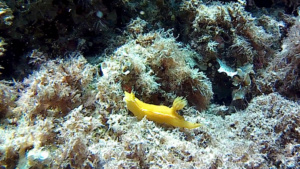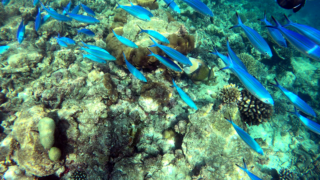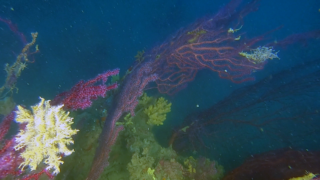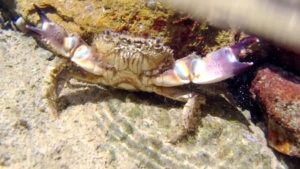While I was trying to film some sea anemones Anemonia sulcata and Actinia equina, I found a toxic alga: Ostreopsis ovata, and an alien alga: Caulerpa in clusters, Caulerpa racemosa.
These are two algae now increasingly common in the Mar Mediterraneo, and their presence is not a good indicator for the health of our seas and biodiversity. Ostreopsis ovata Caulerpa racemosa intotheblue.it
Ostreopsis ovata Caulerpa racemosa intotheblue.it
We have already documented and filmed them on intotheblue.it, and we want to continue talking about them because this summer there was a real explosion of Ostreopsis ovata in various Italian locations, in particular in the coasts between Livorno and Pisa in Marche and Puglia, so much so as to prohibit bathing and alert tourists and swimmers.
http://www.arpat.toscana.it/temi-ambientali/acqua/balneazione/ostreopsis-ovata
Ostreopsis ovata is a unicellular microscopic algae (dinoflagellate group) that commonly lives in the warm waters of tropical seas on the surface of red and brown algae but has found optimal climatic conditions for development also in the waters of the Mediterranean Sea, including many Italian coastal areas. characterized by coasts and seabeds with a prevalently rocky nature.
Toxicity
The flowering of the alga can cause intoxication whose symptoms direct towards a non-specific irritative mechanism on the respiratory and conjunctival mucous membranes, resulting in conjunctival irritation, rhinorrhea (cold), breathing difficulties (cough, wheezing, bronchospasm with moderate dyspnoea) and fever .
The mode of exposure for the onset of symptoms is not ingestion, but the inhalation of marine aerosol, that is, aqueous suspended microparticles containing the algae. This justifies the symptoms even in subjects who do not practice water activities and makes the ban on bathing inappropriate to limit exposure.
Another issue is the presence of Caulerpa racemosa J. Agardh 1873 is a green alga of the Caulerpaceae family. It is native to the Red Sea, but it is an allochthonous species of the Mediterranean Sea, in which it has penetrated through the Suez Canal since 1926. In the Mediterranean, together with the Caulerpa taxifolia, it is threatening the Posidonia oceanica meadows, of which it is a strong competitor.
In the video we see it growing next to Ostreopsis ovata, but the classic “bunches” are already well distinguished.
The news of this summer concerning the Caulerpa racemosa is that its invasiveness is countered by one of the most common fish in the Mediterranean Sea, the Greater Seabream which, contrary to what was expected, feeds on the Caulerpa.
Sea bream (Diplodus sargus Linnaeus, 1758) interacts with this alien species with both physiological and behavioral consequences due to caulerpine, one of the three main secondary metabolites of C. cylindracea. The effects also include the peculiar condition of the meat following cooking, known by the term “rubber bream” or, scientifically, as Abnormally Tough Specimen (ATS).
https://www.agi.it/scienza/news/2021-07-16/alga-aliena-carne-saraghi-gomma-13269334/
Gallery
 English
English Italiano
Italiano
